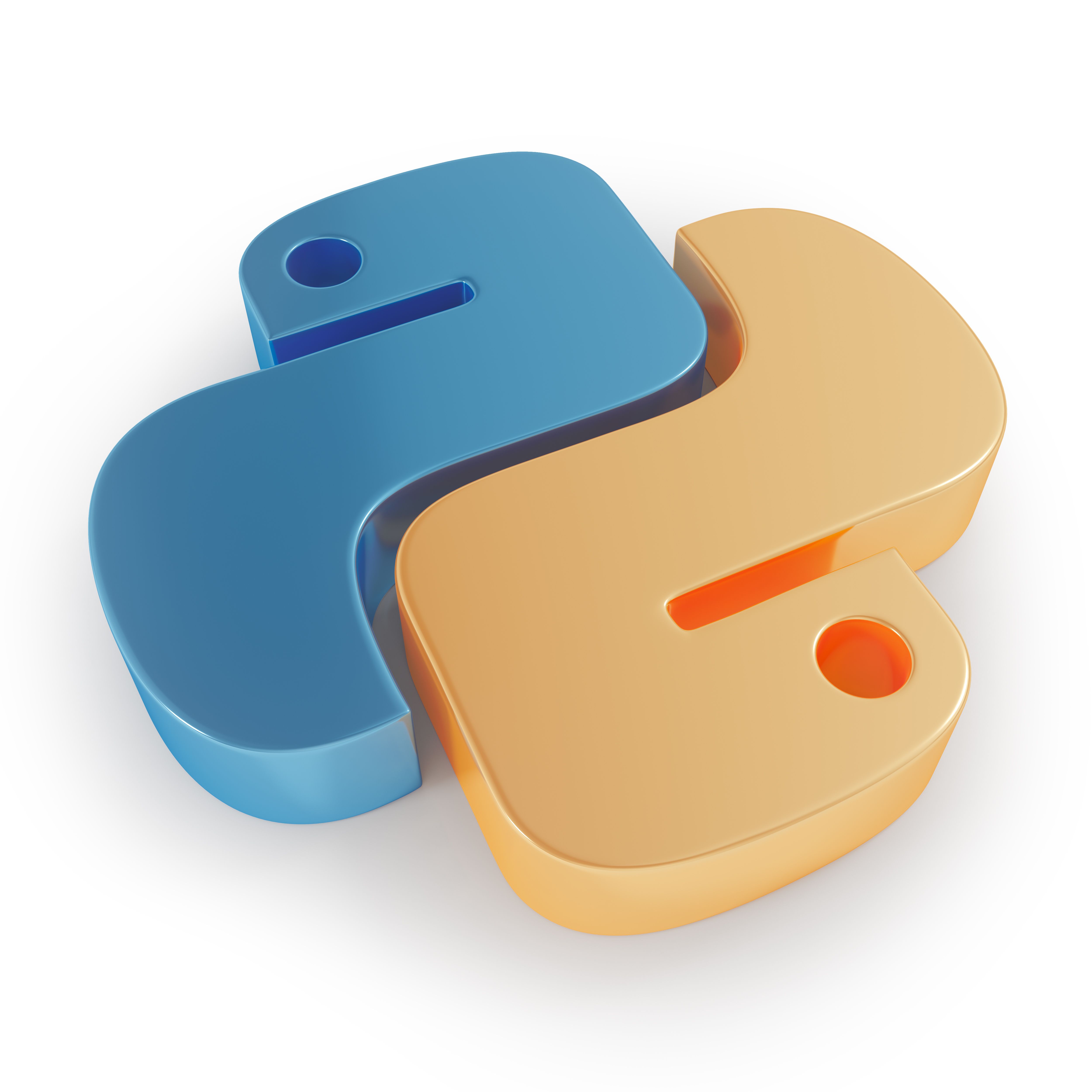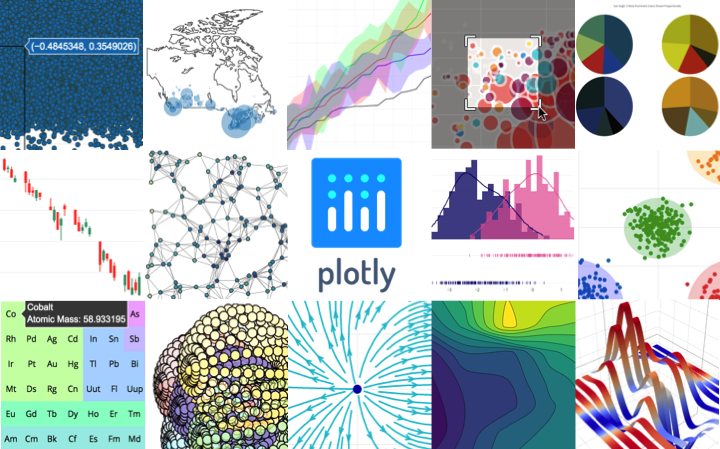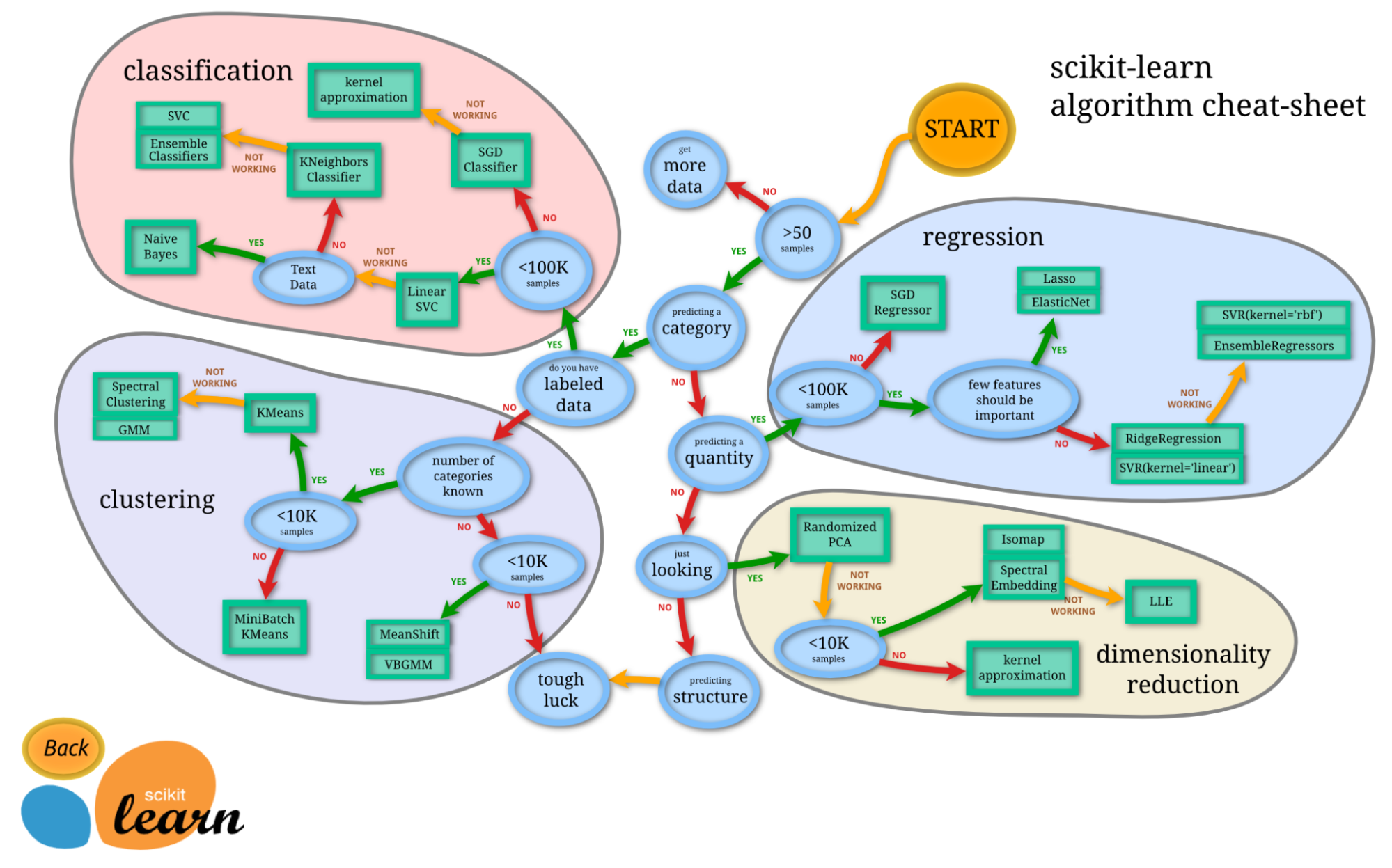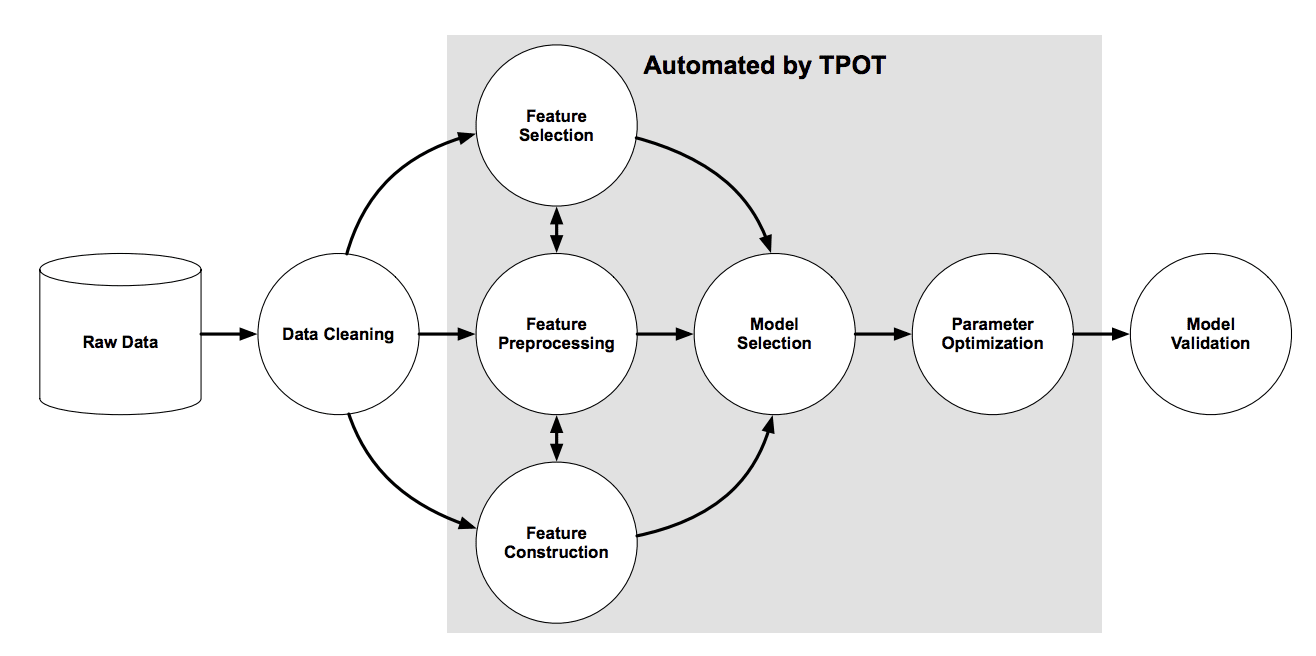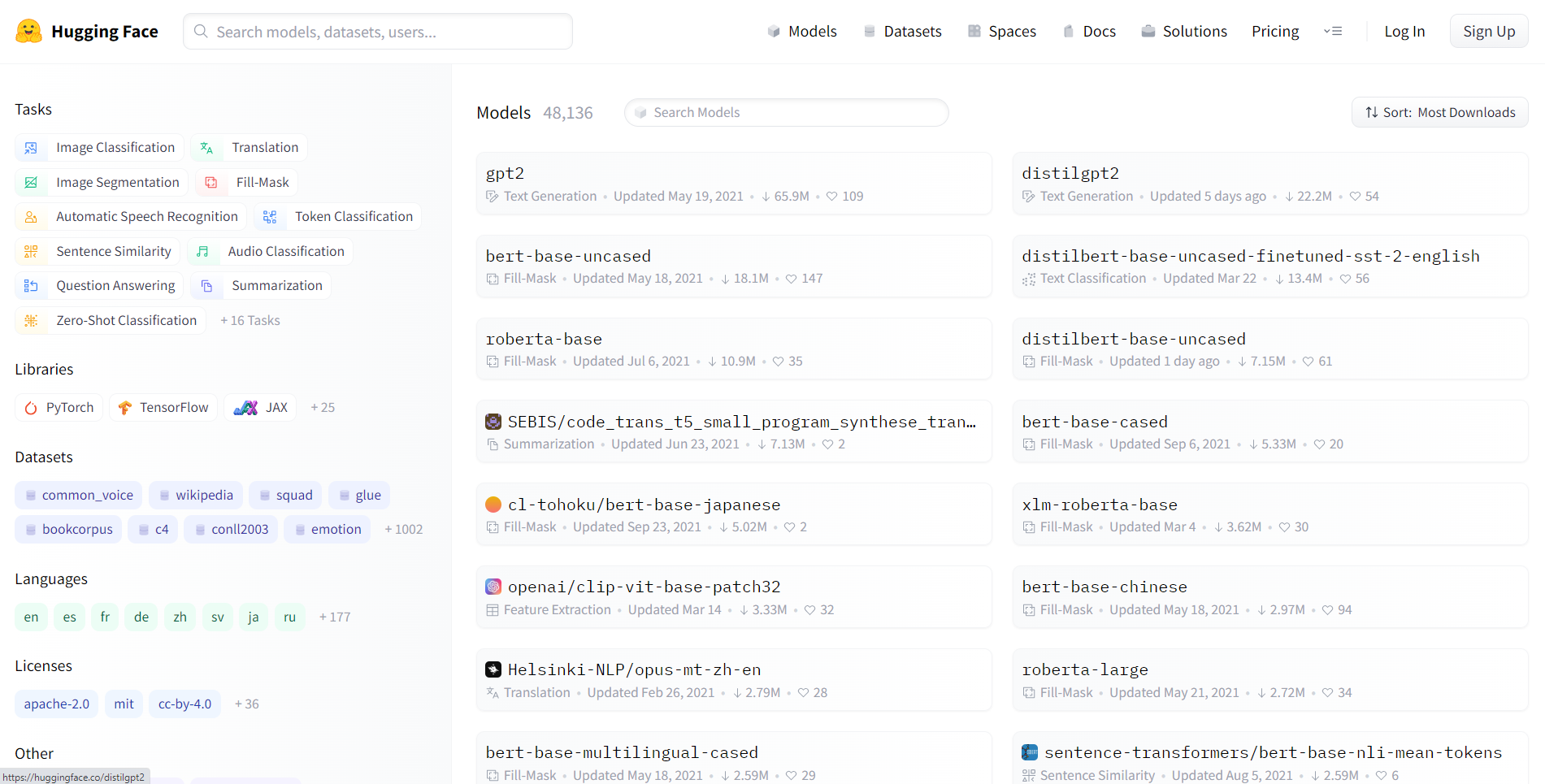Curso
Introdução
Python é uma das linguagens de programação mais populares usadas em várias disciplinas de tecnologia, especialmente em ciência de dados e aprendizado de máquina. O Python oferece uma linguagem de alto nível, orientada a objetos e fácil de codificar, com uma ampla coleção de bibliotecas para uma infinidade de casos de uso. Ele tem mais de 137.000 bibliotecas.
Um dos motivos pelos quais o Python é tão valioso para a ciência de dados é sua vasta coleção de bibliotecas de manipulação de dados, visualização de dados, aprendizado de máquina e aprendizado profundo.
Isenção de responsabilidade dos autores:
O Python tem um ecossistema rico de bibliotecas de ciência de dados em constante crescimento. É quase impossível cobrir tudo em um único artigo. A lista das principais bibliotecas aqui está concentrada em apenas cinco áreas principais: (i) Fundamentos da ciência de dados, (ii) aprendizado de máquina, (iii) AutoML, (iv) aprendizado profundo e (v) processamento de linguagem natural. Há muitas outras áreas que não estão incluídas nessa lista; por exemplo, MLOps, Big Data e Visão Computacional. A lista deste blog não segue nenhuma ordem específica e não deve ser vista de forma alguma como um tipo de classificação.
Bibliotecas Python básicas para ciência de dados
1. NumPy
O NumPy é uma das bibliotecas Python de código aberto mais amplamente utilizadas e é usado principalmente para computação científica. Suas funções matemáticas integradas permitem a computação na velocidade da luz e podem suportar dados multidimensionais e matrizes grandes. Ele também é usado em álgebra linear. O NumPy Array é frequentemente usado preferencialmente em relação às listas, pois usa menos memória e é mais conveniente e eficiente.
De acordo com o site do NumPy, ele é um projeto de código aberto que visa permitir a computação numérica com Python. Ela foi criada em 2005 e se baseou no trabalho inicial das bibliotecas Numeric e Numarray. Uma das grandes vantagens do NumPy é que ele foi lançado sob a licença BSD modificada e, portanto, sempre será de uso gratuito para todos.
O NumPy é desenvolvido abertamente no GitHub com o consenso da comunidade NumPy e da comunidade Python científica mais ampla. Você pode saber mais sobre o Numpy em nosso curso introdutório.
⭐ GitHub Stars: 25K | Total de downloads: 2,4 bilhões
2. Pandas
O Pandas é uma biblioteca de código aberto comumente usada na ciência de dados. É usado principalmente para análise de dados, manipulação de dados e limpeza de dados. O Pandas permite operações simples de modelagem e análise de dados sem a necessidade de escrever muito código. Conforme declarado em seu site, o pandas é uma ferramenta de análise e manipulação de dados de código aberto rápida, poderosa, flexível e fácil de usar. Alguns dos principais recursos dessa biblioteca incluem:
- DataFrames, que permitem a manipulação rápida e eficiente de dados e incluem indexação integrada;
- Várias ferramentas que permitem aos usuários gravar e ler dados entre estruturas de dados na memória e diversos formatos, incluindo arquivos do Excel, arquivos de texto e CSV, Microsoft, formatos HDF5 e bancos de dados SQL;
- Fatiamento inteligente baseado em rótulos, indexação sofisticada e subconjunto de grandes conjuntos de dados;
- Fusão e união de conjuntos de dados de alto desempenho;
- Um mecanismo avançado de agrupamento que possibilita a agregação ou transformação de dados, permitindo que os usuários executem operações de divisão-aplicação-combinação em conjuntos de dados;
- Funcionalidade de série temporal que permite a geração de intervalo de datas e conversão de frequência, estatísticas de janela móvel, mudança de data e defasagem. Você poderá até mesmo unir séries temporais e criar intervalos de tempo específicos de domínio sem se preocupar com a perda de dados;
- Ideal para trabalhar com caminhos de código críticos escritos em C ou Cython.
Começar a usar o pandas é simples e direto. Você pode conferir o artigo Analyzing Police Activity with pandas do DataCamp para saber como usar o panda em conjuntos de dados do mundo real.
⭐ GitHub Stars: 41K | Total de downloads: 1,6 bilhão
3. Matplotlib
O Matplotlib é uma biblioteca extensa para criar visualizações fixas, interativas e animadas em Python. Um grande número de pacotes de terceiros amplia e se baseia na funcionalidade do Matplotlib, incluindo várias interfaces de plotagem de nível superior (Seaborn, HoloViews, ggplot etc.)
O Matplotlib foi projetado para ser tão funcional quanto o MATLAB, com o benefício adicional de poder usar Python. Ele também tem a vantagem de ser gratuito e de código aberto. Ele permite que o usuário visualize dados usando uma variedade de tipos diferentes de gráficos, incluindo, entre outros, gráficos de dispersão, histogramas, gráficos de barras, gráficos de erros e boxplots. Além disso, todas as visualizações podem ser implementadas com apenas algumas linhas de código.
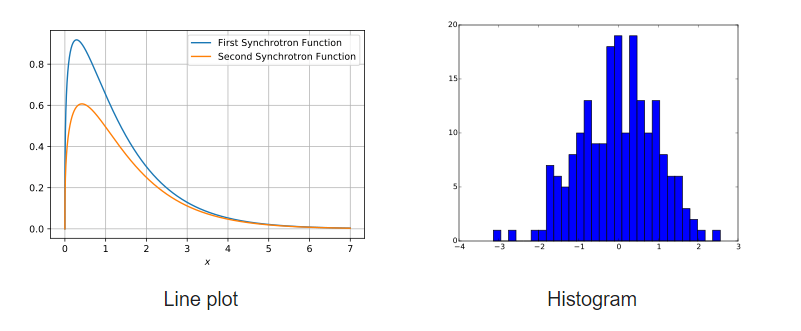
Gráficos de exemplo desenvolvidos com o Matplotlib
Comece a usar o Matplotlib com este tutorial passo a passo.
⭐ GitHub Stars: 18.7K | Total de downloads: 653 milhões
4. Seaborn
Outra estrutura popular de visualização de dados em Python baseada em Matplotlib, o Seaborn é uma interface de alto nível para a criação de visuais estatísticos esteticamente atraentes e valiosos, que são essenciais para o estudo e a compreensão dos dados. Essa biblioteca Python está intimamente ligada às estruturas de dados NumPy e pandas. O princípio orientador do Seaborn é tornar a visualização um componente essencial da análise e exploração de dados; portanto, seus algoritmos de plotagem usam quadros de dados que abrangem conjuntos de dados inteiros.
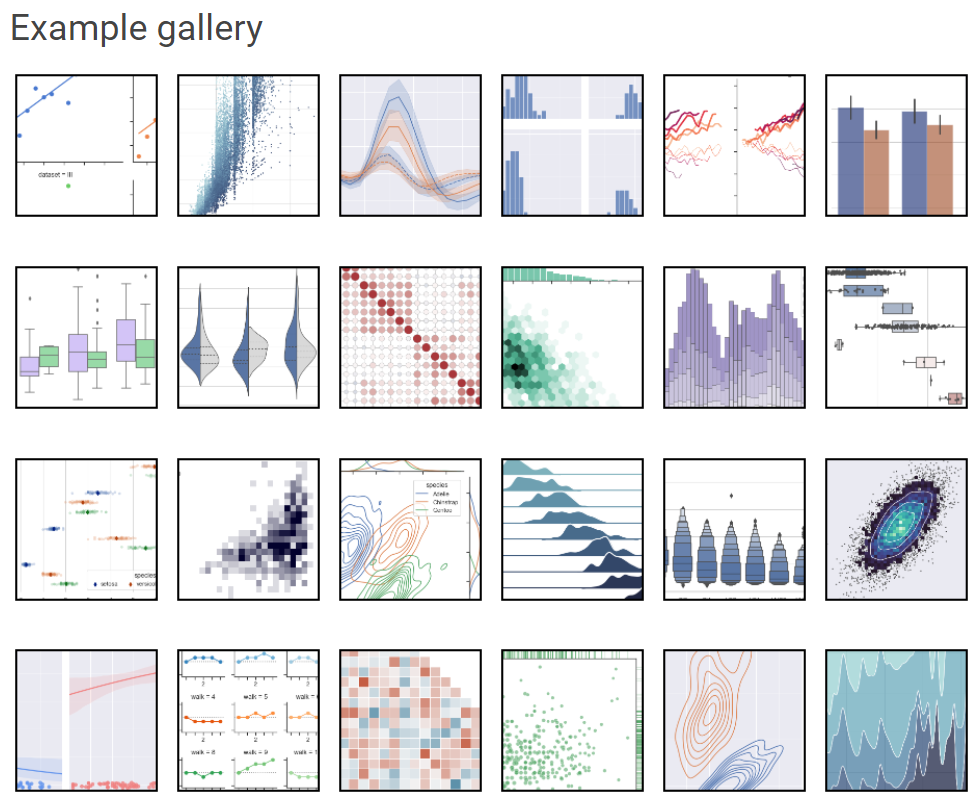 Galeria de
Galeria de
Galeria de exemplos do Seaborn
Este tutorial do Seaborn para iniciantes é um ótimo recurso para ajudá-lo a se familiarizar com essa biblioteca de visualização dinâmica.
⭐ GitHub Stars: 11.6K | Total de downloads: 180 milhões
5. Plotly
A biblioteca de gráficos de código aberto Plotly, extremamente popular, pode ser usada para criar visualizações interativas de dados. O Plotly foi desenvolvido com base na biblioteca Plotly JavaScript (plotly.js) e pode ser usado para criar visualizações de dados baseadas na Web que podem ser salvas como arquivos HTML ou exibidas em notebooks Jupyter e aplicativos da Web usando o Dash.
Ele oferece mais de 40 tipos de gráficos exclusivos, como gráficos de dispersão, histogramas, gráficos de linhas, gráficos de barras, gráficos de pizza, barras de erro, gráficos de caixa, eixos múltiplos, sparklines, dendrogramas e gráficos 3D. O Plotly também oferece gráficos de contorno, que não são tão comuns em outras bibliotecas de visualização de dados.
Se você quiser visualizações interativas ou gráficos semelhantes a painéis, o Plotly é uma boa alternativa ao Matplotlib e ao Seaborn. Atualmente, ele está disponível para uso sob a licença MIT.
Você pode começar a dominar o Plotly hoje mesmo com este curso de visualização do Plotly.
⭐ GitHub Stars: 14.7K | Total de downloads: 190 milhões
6. Scikit-Learn
Os termos aprendizado de máquina e scikit-learn são inseparáveis. O Scikit-learn é uma das bibliotecas de aprendizado de máquina mais usadas em Python. Criada com base no NumPy, SciPy e Matplotlib, é uma biblioteca Python de código aberto que pode ser usada comercialmente sob a licença BSD. É uma ferramenta simples e eficiente para tarefas de análise de dados preditivos.
Lançado inicialmente em 2007 como um projeto do Google Summer of Code, o Scikit-learn é um projeto orientado pela comunidade; no entanto, subsídios institucionais e privados ajudam a garantir sua sustentabilidade.
O melhor do scikit-learn é que ele é muito fácil de usar.
import numpy as np
from sklearn import datasets, linear_model
from sklearn.metrics import mean_squared_error, r2_score
# Load the diabetes dataset
diabetes_X, diabetes_y = datasets.load_diabetes(return_X_y=True)
# Use only one feature
diabetes_X = diabetes_X[:, np.newaxis, 2]
# Split the data into training/testing sets
diabetes_X_train = diabetes_X[:-20]
diabetes_X_test = diabetes_X[-20:]
# Split the targets into training/testing sets
diabetes_y_train = diabetes_y[:-20]
diabetes_y_test = diabetes_y[-20:]
# Create linear regression object
regr = linear_model.LinearRegression()
# Train the model using the training sets
regr.fit(diabetes_X_train, diabetes_y_train)
# Make predictions using the testing set
diabetes_y_pred = regr.predict(diabetes_X_test)Crédito: Código reproduzido da documentação oficial do scikit-learn.
Você pode experimentar o scikit-learn por conta própria com este tutorial inicial do scikit-learn.
⭐ GitHub Stars: 57K | Total de downloads: 703 milhões
Bibliotecas Python de aprendizado de máquina
7. LightGBM
O LightGBM é uma biblioteca de aumento de gradiente de código aberto imensamente popular que emprega algoritmos baseados em árvores. Ele oferece as seguintes vantagens:
- Velocidade de treinamento mais rápida e maior eficiência
- Menor uso de memória
- Melhor precisão
- Suporte ao aprendizado paralelo, distribuído e de GPU
- Capacidade de lidar com dados em grande escala
Ele pode ser usado tanto para tarefas de classificação supervisionada quanto de regressão. Você pode consultar a documentação oficial ou o GitHub para saber mais sobre essa incrível estrutura.
⭐ GitHub Stars: 15.8K | Total de downloads: 162 milhões
8. XGBoost
O XGBoost é outra biblioteca de aumento de gradiente distribuído amplamente utilizada, criada para ser portátil, flexível e eficiente. Ele permite a implementação de algoritmos de aprendizado de máquina dentro da estrutura de aumento de gradiente. O XGBoost oferece árvores de decisão com gradiente impulsionado (GBDT), um impulsionamento de árvore paralelo que oferece soluções para muitos problemas de ciência de dados com rapidez e precisão. O mesmo código é executado nos principais ambientes distribuídos (Hadoop, SGE, MPI) e pode resolver inúmeros problemas.
O XGBoost ganhou popularidade significativa nos últimos anos como resultado de ajudar indivíduos e equipes a vencer praticamente todas as competições de dados estruturados da Kaggle. As vantagens do XGBoost incluem:
- Uma base de usuários grande e em constante crescimento
- Pode ser usado em uma ampla gama de aplicações, incluindo regressão, classificação e ranking
- Compatível com todas as plataformas OS X, Windows e Linux
- Integração com a nuvem
- Usado na produção por muitas organizações
O XGBoost foi desenvolvido e mantido por membros ativos da comunidade e está licenciado para uso sob a licença Apache. Este tutorial do XGBoost é um ótimo recurso se você quiser saber mais.
⭐ GitHub Stars: 25.2K | Total de downloads: 179 milhões
9. CatBoost
O Catboost é um aumento de gradiente rápido, dimensionável e de alto desempenho na biblioteca de árvores de decisão usada para classificação, classificação, regressão e outras tarefas de aprendizado de máquina para Python, R, Java e C++. Ele suporta computação em CPU e GPU.
Como sucessor do algoritmo MatrixNet, ele é amplamente usado para classificar tarefas, fazer previsões e recomendações. Graças ao seu caráter universal, ele pode ser aplicado em uma ampla gama de áreas e a uma variedade de problemas.
As vantagens do CatBoost, de acordo com seu repositório, são
- Maior desempenho em muitos conjuntos de dados em comparação com outras bibliotecas de árvores de decisão com gradiente de reforço
- A melhor velocidade de previsão da categoria
- Suporte para recursos numéricos e categóricos
- Excelente suporte a GPU
- Ferramentas de visualização incluídas
- Treinamento distribuído eficiente e reproduzível com o Apache Spark e CLI
⭐ GitHub Stars: 7.5K | Total de downloads: 53 milhões
10. Modelos de estatísticas
O Statsmodels fornece classes e funções que permitem aos usuários estimar vários modelos estatísticos, realizar testes estatísticos e explorar dados estatísticos. Em seguida, é fornecida uma lista abrangente de estatísticas de resultados para cada estimador. A precisão dos resultados pode então ser testada em relação aos pacotes estatísticos existentes.
A maioria dos resultados dos testes na biblioteca foi verificada com pelo menos um outro pacote estatístico: R, Stata ou SAS. Alguns recursos dos modelos estatísticos são:
- Ele contém funções avançadas para testes estatísticos e modelagem não disponíveis em bibliotecas numéricas como NumPy ou SciPy.
- Regressão linear.
- Regressão logística.
- Análise de séries temporais.
- Funciona com DataFrames.
- O método para análise estatística está mais alinhado com a linguagem de programação R, o que o torna uma biblioteca adequada para cientistas de dados já familiarizados com o R e que desejam fazer a transição para o Python.
Este curso de modelos estatísticos para iniciantes é um excelente ponto de partida se você quiser saber mais.
⭐ GitHub Stars: 9.2K | Total de downloads: 161 milhões
11. RAPIDS.AI cuDF e cuML
O conjunto RAPIDS de bibliotecas de software de código aberto executa pipelines de análise e ciência de dados de ponta a ponta inteiramente em GPUs. Ele se adapta perfeitamente de estações de trabalho com GPU a servidores com várias GPUs e clusters de vários nós com Dask. O projeto é apoiado pela NVIDIA e também conta com o Numba, o Apache Arrow e muitos outros projetos de código aberto.
cuDF - O cuDF é uma biblioteca GPU DataFrame usada para carregar, unir, agregar, filtrar e manipular dados. Ele foi desenvolvido com base no formato de memória colunar encontrado no Apache Arrow. Ele fornece uma API semelhante ao pandas que será familiar aos engenheiros e cientistas de dados, o que permite que eles acelerem facilmente seus fluxos de trabalho sem entrar nos detalhes da programação CUDA. Para saber mais sobre esse projeto, confira este repositório do GitHub.
cuML - O cuML é um conjunto de bibliotecas que implementa algoritmos de aprendizado de máquina e funções matemáticas primitivas que compartilham APIs compatíveis com outros projetos RAPIDS. Ele permite que cientistas de dados, pesquisadores e engenheiros de software executem tarefas tradicionais de ML tabular em GPUs sem entrar nos detalhes da programação CUDA. A API Python do cuML geralmente corresponde à API do scikit-learn. Para saber mais sobre esse projeto, confira este repositório do GitHub.
12. Optuna
Essa estrutura de otimização de hiperparâmetros de código aberto é usada principalmente para automatizar pesquisas de hiperparâmetros. Ele usa loops, condicionais e sintaxe do Python para procurar automaticamente os hiperparâmetros ideais e pode pesquisar grandes espaços e eliminar tentativas pouco promissoras para obter resultados mais rápidos. O melhor de tudo é que é fácil de paralelizar e escalonar em grandes conjuntos de dados.
Principais recursos de acordo com o repositório do GitHub:
- Arquitetura leve, versátil e independente de plataforma
- Espaços de pesquisa pitônica
- Algoritmos de otimização eficientes
- Paralelização fácil
- Visualização rápida
⭐ GitHub Stars: 9.1K | Total de downloads: 18 milhões
Bibliotecas Python de aprendizado automático de máquina (AutoML)
13. PyCaret
Essa biblioteca de aprendizado de máquina de código aberto e extremamente popular automatiza os fluxos de trabalho de aprendizado de máquina em Python usando pouquíssimo código. É uma ferramenta completa para gerenciamento de modelos e aprendizado de máquina que pode acelerar drasticamente o ciclo de experimentos.
Em comparação com outras bibliotecas de aprendizado de máquina de código aberto, o PyCaret oferece uma solução de baixo código que pode substituir centenas de linhas de código por apenas algumas. Isso torna os experimentos exponencialmente rápidos e eficientes.
O PyCaret está atualmente disponível para uso sob a licença MIT. Para saber mais sobre o PyCaret, você pode consultar a documentação oficial ou o repositório do GitHub ou conferir este tutorial introdutório do PyCaret.
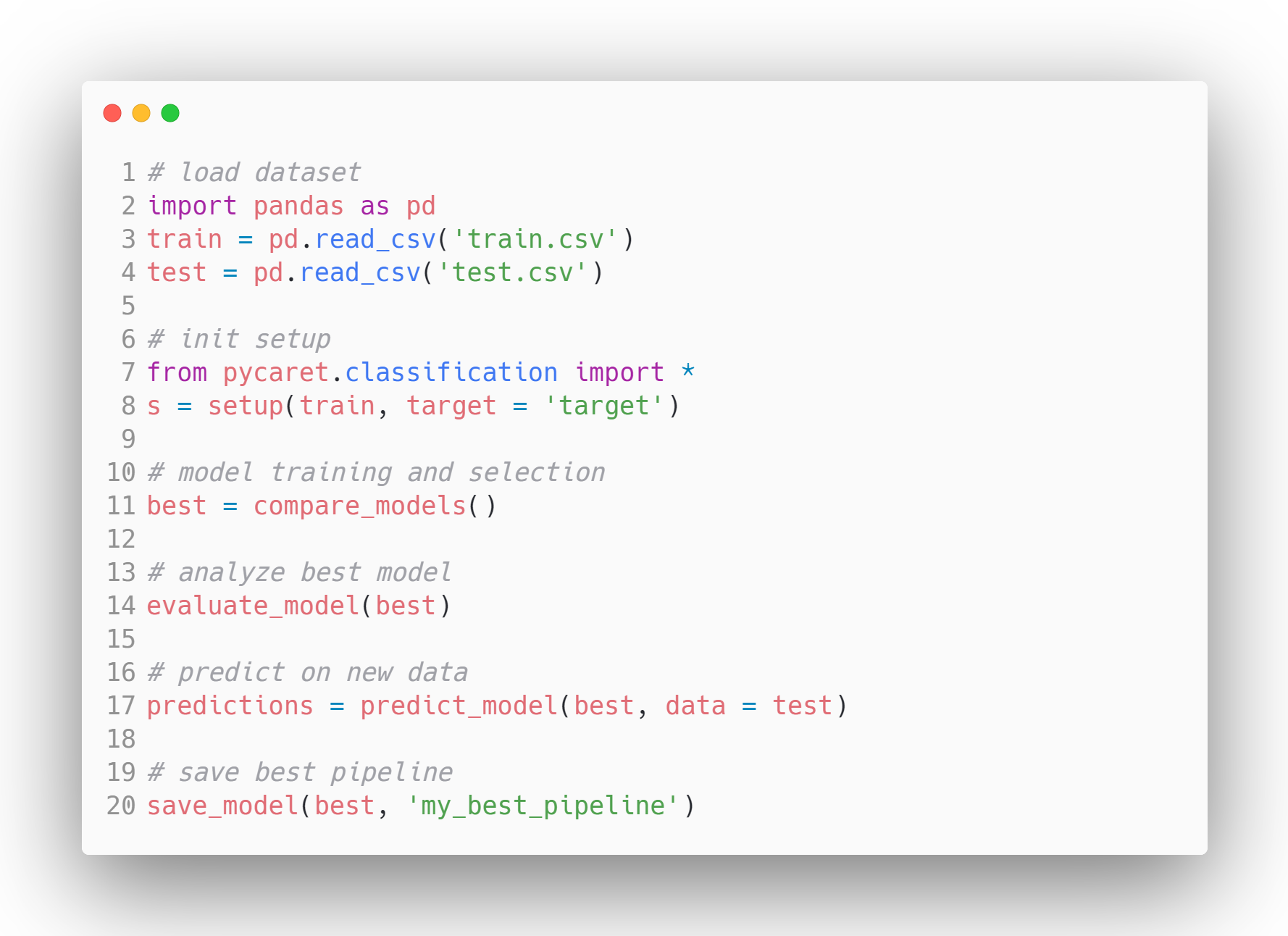 de fluxo de trabalho de modelo
de fluxo de trabalho de modelo
Exemplo de fluxo de trabalho de modelo em PyCaret - Fonte
⭐ GitHub Stars: 8.1K | Total de downloads: 3,9 milhões
14. H2O
O H2O é uma plataforma de aprendizado de máquina e análise preditiva que permite a construção de modelos de aprendizado de máquina em big data. Ele também oferece fácil produção desses modelos em um ambiente corporativo.
O código principal do H2O é escrito em Java. Os algoritmos usam a estrutura Java Fork/Join para multi-threading e são implementados sobre a estrutura Map/Reduce distribuída do H2O.
O H2O está licenciado sob a Apache License, versão 2.0, e está disponível para as linguagens Python, R e Java. Para saber mais sobre o H2O AutoML, consulte a documentação oficial.
⭐ GitHub Stars: 10.6K | Total de downloads: 15,1 milhões
15. TPOT
TPOT é uma biblioteca de aprendizado automático de máquina (AutoML). Ele foi criado como um complemento do scikit-learn e usa a programação genética (GP) para determinar o melhor pipeline de modelos para um determinado conjunto de dados.
Usando uma versão especial de programação genética, o TPOT pode projetar e otimizar automaticamente as transformações de dados e os modelos de aprendizado de máquina, garantindo a máxima precisão de classificação para um determinado conjunto de dados de aprendizado supervisionado.
TPOT é uma das bibliotecas AutoML mais antigas em Python. Ele pode ser usado para tarefas de classificação e regressão e atualmente está licenciado para uso sob a GNU Lesser General Public License v3.0. Você pode saber mais sobre o TPOT neste tutorial.
⭐ GitHub Stars: 9.4K | Total de downloads: 1,4 milhão
16. Aprendizado automático
O Auto-sklearn é um kit de ferramentas de aprendizado de máquina automatizado e um substituto adequado para um modelo do scikit-learn. Ele realiza o ajuste de hiperparâmetros e a seleção de algoritmos automaticamente, economizando um tempo considerável para os profissionais de aprendizado de máquina. Seu design reflete os recentes avanços em meta-aprendizagem, construção de conjuntos e otimização bayesiana.
Criado como um complemento do scikit-learn, o auto-sklearn usa um procedimento de pesquisa de otimização bayesiana para identificar o pipeline de modelos de melhor desempenho para um determinado conjunto de dados.
É extremamente fácil usar a aprendizagem automática, e ela pode ser empregada tanto para tarefas de classificação supervisionada quanto de regressão.
import autosklearn.classification
cls = autosklearn.classification.AutoSklearnClassifier()
cls.fit(X_train, y_train)
predictions = cls.predict(X_test)Fonte: Exemplo reproduzido da documentação oficial do auto-sklearn.
Para saber mais sobre o auto-sklearn, confira o repositório do GitHub.
⭐ GitHub Stars: 7.3K | Total de downloads: 675K
17. FLAML
FLAML é uma biblioteca Python leve que identifica automaticamente modelos precisos de aprendizado de máquina. Ele seleciona automaticamente os alunos e os hiperparâmetros, economizando tempo e esforço consideráveis dos profissionais de aprendizado de máquina. De acordo com o repositório do GitHub, alguns recursos do FLAML são:
- Para tarefas de classificação e regressão, o FLAML pode encontrar rapidamente modelos de qualidade com poucos recursos computacionais.
- Ele oferece suporte a redes neurais profundas, bem como a modelos clássicos de aprendizado de máquina.
- É fácil de personalizar ou ampliar.
- Ele oferece suporte ao ajuste automático rápido, capaz de lidar com restrições complexas e parada antecipada.
Com apenas três linhas de código, você pode obter um estimador no estilo do scikit-learn com esse rápido mecanismo AutoML.
from flaml import AutoML
automl = AutoML()
automl.fit(X_train, y_train, task="classification")Fonte: Exemplo reproduzido do repositório oficial do GitHub
⭐ GitHub Stars: 3.5K | Total de downloads: 456K
Bibliotecas Python de aprendizagem profunda
18. TensorFlow
O TensorFlow é uma biblioteca popular de código aberto para computação numérica de alto desempenho desenvolvida pela equipe do Google Brain no Google e um dos pilares do campo de pesquisa de aprendizagem profunda.
Conforme declarado no site oficial, o TensorFlow é uma plataforma de código aberto de ponta a ponta para aprendizado de máquina. Ele oferece uma variedade extensa e versátil de ferramentas, bibliotecas e recursos da comunidade para pesquisadores e desenvolvedores de aprendizado de máquina.
Alguns dos recursos do TensorFlow que o tornaram uma biblioteca de aprendizagem profunda popular e amplamente usada:
- Os modelos podem ser desenvolvidos facilmente.
- Computações numéricas complexas são possíveis de forma escalonável.
- O TensorFlow é rico em APIs e oferece APIs estáveis de baixo e alto nível em Python e C.
- Fácil implementação e computação usando CPU e GPU.
- Contém modelos e conjuntos de dados pré-treinados.
- Modelos pré-treinados para celulares, dispositivos incorporados e produção.
- Tensorboard, um kit que usa o kit de ferramentas de visualização do TensorFlow para registrar e acompanhar experimentos e treinamento de modelos.
- Compatível com o Keras, uma API de alto nível do TensorFlow.
Para saber mais sobre o TensorFlow, consulte o guia oficial ou o repositório do GitHub ou tente usá-lo você mesmo seguindo este tutorial passo a passo do TensorFlow.
⭐ GitHub Stars: 180K | Total de downloads: 384 milhões
19. PyTorch
O PyTorch é uma estrutura de aprendizado de máquina que acelera drasticamente a jornada desde a criação de protótipos de pesquisa até a implantação da produção. É uma biblioteca de tensores otimizada para aprendizagem profunda usando GPUs e CPUs, e é considerada uma alternativa ao TensorFlow. Com o tempo, a popularidade do PyTorch cresceu e ultrapassou o TensorFlow nas tendências do Google.
Ele foi desenvolvido e é mantido pelo Facebook e atualmente está disponível para uso sob a BSD.
De acordo com o site oficial, os principais recursos do PyTorch são:
- Ele faz a transição perfeita entre os modos ávido e gráfico com o TorchScript e acelera o caminho para a produção com o TorchServe.
- Ele oferece treinamento distribuído dimensionável e otimização de desempenho em pesquisa, e a produção é habilitada pelo backend torch.distributed.
- Um rico ecossistema de ferramentas e bibliotecas amplia o PyTorch e oferece suporte ao desenvolvimento em visão computacional, PNL e outros.
- Amplo suporte nas principais plataformas de nuvem
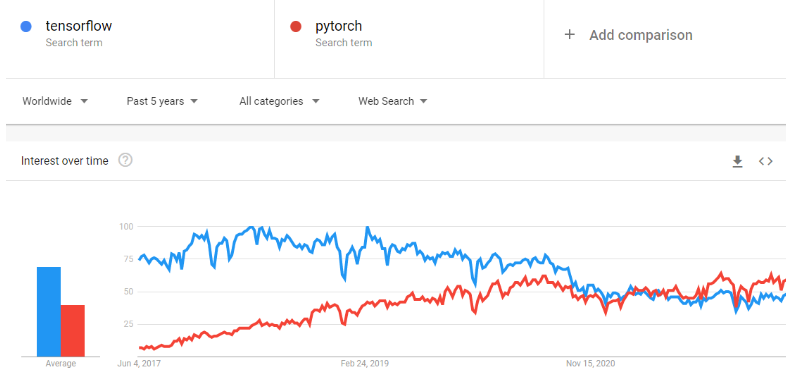
⭐ GitHub Stars: 74K | Total de downloads: 119 milhões
20. FastAI
A FastAI é uma biblioteca de aprendizagem profunda que oferece aos usuários componentes de alto nível que podem gerar resultados de última geração sem esforço. Ele também inclui componentes de baixo nível que podem ser trocados para desenvolver novas abordagens. Seu objetivo é fazer essas duas coisas sem comprometer substancialmente a facilidade de uso, a flexibilidade ou o desempenho.
Características:
- Um sistema de despacho de tipos para Python, juntamente com uma hierarquia de tipos semânticos para tensores.
- Uma biblioteca de visão computacional otimizada para GPU que é totalmente extensível usando Python puro
- Um otimizador que refatora a funcionalidade comum dos otimizadores modernos em duas partes básicas, permitindo que os algoritmos de otimização sejam implementados em 4 a 5 linhas de código.
- Um sistema de retorno de chamada bidirecional capaz de acessar e alterar qualquer componente do modelo, dos dados ou do otimizador em qualquer ponto do treinamento.
Para saber mais sobre o projeto, consulte a documentação oficial.
⭐ GitHub Stars: 25.1K | Total de downloads: 6,1 milhões
21. Keras
O Keras é uma API de aprendizagem profunda projetada para seres humanos, não para máquinas. O Keras segue as práticas recomendadas para reduzir a carga cognitiva: ele oferece APIs consistentes e simples, minimiza o número de ações do usuário necessárias para casos de uso comuns e fornece mensagens de erro claras e acionáveis. O Keras é tão intuitivo que o TensorFlow adotou o Keras como sua API padrão na versão TF 2.0.
O Keras oferece um mecanismo mais simples para expressar redes neurais e também inclui algumas das melhores ferramentas para o desenvolvimento de modelos, processamento de conjuntos de dados, visualização de gráficos e muito mais.
Características:
- Ele funciona sem problemas tanto na CPU quanto na GPU.
- Ele suporta quase todos os modelos de uma rede neural, incluindo convolucional, incorporação, agrupamento, recorrente etc. Esses modelos também podem ser combinados para formar modelos cada vez mais complexos.
- O Keras, por ser modular por natureza, é incrivelmente expressivo, flexível e adequado para pesquisas inovadoras.
- É extremamente fácil de depurar e explorar.
Para saber mais sobre o Keras, consulte a documentação oficial ou faça este curso introdutório: Aprendizagem profunda com o Keras.
⭐ GitHub Stars: 60.2K | Total de downloads: 163 milhões
22. PyTorch Lightning
O PyTorch Lightning oferece uma interface de alto nível para o PyTorch. Sua estrutura leve e de alto desempenho pode organizar o código PyTorch para dissociar a pesquisa da engenharia, tornando os experimentos de aprendizagem profunda mais simples de entender e reproduzir. Ele foi desenvolvido para criar modelos de aprendizagem profunda dimensionáveis que podem ser executados sem problemas em hardware distribuído.
De acordo com o site oficial, o PyTorch lightning foi projetado para que você possa dedicar mais tempo à pesquisa e menos à engenharia. Uma rápida refatoração permitirá que você faça isso:
- Execute seu código em qualquer hardware.
- Desempenho do perfil e gargalos.
- Checkpointing do modelo.
- Têm precisão de 16 bits.
- Executar treinamento distribuído.
Para saber mais sobre essa biblioteca, consulte seu site oficial.
⭐ GitHub Stars: 25.6K | Total de downloads: 18,2 milhões
Bibliotecas Python para processamento de linguagem natural
23. NLTK
O NLTK é uma das principais plataformas para a criação de programas Python para analisar dados de linguagem humana. Ele oferece interfaces fáceis de usar para mais de 50 corpora e recursos léxicos, como o WordNet, bem como um conjunto de bibliotecas de processamento de texto; ele também oferece wrappers para bibliotecas de NLP de nível industrial.
O NLTK foi considerado "uma ferramenta maravilhosa para ensinar e trabalhar com linguística computacional usando Python". A biblioteca é de código aberto e está disponível para uso sob a licença Apache 2.0.
Para saber mais sobre o NLTK, consulte a documentação oficial ou leia este tutorial do NLTK para iniciantes.
⭐ GitHub Stars: 12.7K | Total de downloads: 264 milhões
24. spaCy
O spaCy é uma biblioteca de processamento de linguagem natural em Python, de código aberto e com força industrial. O spaCy é excelente em tarefas de extração de informações em larga escala. O spaCy é a biblioteca ideal para ser usada se o seu aplicativo precisar processar grandes volumes de dados da Web.
Características:
- O spaCy é compatível com o processamento de CPU e GPU.
- Oferece suporte para mais de 66 idiomas
- Tem 73 pipelines treinados para 22 idiomas
- Aprendizagem multitarefa com transformadores pré-treinados como o BERT
- Vetores de palavras pré-treinados
- Velocidade de última geração
- Sistema de treinamento pronto para produção
- Componentes para reconhecimento de entidades nomeadas, marcação de parte da fala, análise de dependência, segmentação de frases, classificação de texto, lematização, análise morfológica, vinculação de entidades e muito mais
- Suporte para modelos personalizados do TensorFlow e do PyTorch
- Visualizadores integrados para sintaxe e NER
- Fácil empacotamento de modelos, implantação e gerenciamento de fluxo de trabalho
Para saber mais sobre o spaCy, consulte o site oficial ou o repositório do GitHub. Você também pode se familiarizar rapidamente com suas funcionalidades usando esta útil folha de dicas do spaCY.
⭐ GitHub Stars: 28K | Total de downloads: 81 milhões
25. Gensim
Gensim é uma biblioteca Python para modelagem de tópicos, indexação de documentos e recuperação de similaridade com grandes corpora. Seu principal usuário está nas comunidades de recuperação de informações e processamento de linguagem natural.
Características:
- Todos os algoritmos são independentes da memória, de modo que o Gensim pode processar entradas maiores que a RAM.
- Interfaces intuitivas
- Ele facilita a implementação de algoritmos comumente usados, incluindo alocação de Dirichlet latente, projeções aleatórias, análise semântica latente on-line e aprendizagem profunda word2vec.
- Computação distribuída: ele pode executar a análise semântica latente e a alocação de Dirichlet latente em um cluster de computadores.
Para saber mais sobre o Gensim, consulte o site oficial ou o repositório do GitHub.
⭐ GitHub Stars: 14.9K | Total de downloads: 236 milhões
26. Transformadores de rostos abraçados
Hugging Face Transformers é uma biblioteca de código aberto da Hugging Face. Os transformadores permitem que as APIs baixem e treinem facilmente modelos pré-treinados de última geração. O uso de modelos pré-treinados pode reduzir os custos de computação, a pegada de carbono e economizar o tempo necessário para treinar um modelo do zero. Os modelos são adequados para uma variedade de modalidades, incluindo:
- Texto: classificação de texto, extração de informações, resposta a perguntas, tradução, resumo e até mesmo geração de texto em mais de 100 idiomas.
- Imagens: classificação de imagens, detecção de objetos e segmentação.
- Áudio: reconhecimento de fala e classificação de áudio.
- Multimodal: resposta a perguntas em tabelas, reconhecimento óptico de caracteres, extração de informações de documentos digitalizados, classificação de vídeo e resposta a perguntas visuais.
A biblioteca de transformadores oferece suporte à integração perfeita entre três das bibliotecas de aprendizagem profunda mais populares: PyTorch, TensorFlow e JAX. Você pode treinar seu modelo em três linhas de código em uma estrutura e carregá-lo para inferência com outra. A arquitetura de cada transformador é definida em um módulo Python autônomo, o que os torna facilmente personalizáveis para experimentos e pesquisas.
A biblioteca está atualmente disponível para uso sob a Licença Apache 2.0.
Para saber mais sobre os transformadores, consulte o site oficial deles ou o repositório do GitHub e confira nosso tutorial sobre como usar Transformers e Hugging Face.
⭐ GitHub Stars: 119K | Total de downloads: 62 milhões
Escolhendo a melhor biblioteca Python
Selecionar a biblioteca Python certa para suas tarefas de ciência de dados, aprendizado de máquina ou processamento de linguagem natural é uma decisão crucial que pode afetar significativamente o sucesso de seus projetos. Com uma vasta gama de bibliotecas disponíveis, é essencial considerar vários fatores para fazer uma escolha informada. Aqui estão as principais considerações para orientá-lo:
1. Requisitos do projeto
- Defina suas metas: Descreva claramente os objetivos de seu projeto. Identifique as tarefas específicas, como manipulação de dados, visualização, aprendizado de máquina ou processamento de linguagem natural, que seu projeto envolve.
- Entenda o escopo: Considere o escopo do seu projeto. Algumas bibliotecas se destacam em áreas específicas, portanto, é fundamental combinar suas necessidades com os pontos fortes da biblioteca.
2. Facilidade de uso e curva de aprendizado
- Interfaces fáceis de usar: Avalie a facilidade de uso de cada biblioteca. As bibliotecas com APIs intuitivas, documentação extensa e uma comunidade de apoio podem facilitar o processo de desenvolvimento.
- Recursos de aprendizado: Verifique a disponibilidade de tutoriais, cursos e fóruns da comunidade para cada biblioteca. As bibliotecas com recursos educacionais avançados podem acelerar a curva de aprendizado.
3. Apoio da comunidade
- Comunidade ativa: Uma comunidade vibrante e ativa é sinal de uma biblioteca saudável e bem conservada. Considere o número de colaboradores, a frequência das atualizações e a capacidade de resposta às consultas da comunidade.
- Atividade no GitHub: Verifique os repositórios do GitHub para ver os commits, problemas e discussões recentes. Um repositório GitHub ativo geralmente indica desenvolvimento contínuo e envolvimento da comunidade.
4. Desempenho e escalabilidade
- Escalabilidade: Considere a escalabilidade da biblioteca para lidar com grandes conjuntos de dados ou cálculos complexos. Algumas bibliotecas são otimizadas para desempenho e podem ser dimensionadas de forma eficiente com o aumento do tamanho dos dados.
5. Integração com o ecossistema
- Compatibilidade: Certifique-se de que a biblioteca escolhida se integre perfeitamente à sua pilha de tecnologia existente. A compatibilidade com outras bibliotecas, estruturas ou ferramentas que você planeja usar é fundamental para um fluxo de trabalho coeso.
6. Licença e considerações legais
- Licenciamento: Entenda os termos de licenciamento de cada biblioteca. Certifique-se de que a licença esteja alinhada com os requisitos de seu projeto e com quaisquer considerações legais que sua organização possa ter.
7. Feedback e reputação da comunidade
- Avaliações e depoimentos: Procure análises e depoimentos de outros desenvolvedores e cientistas de dados que tenham usado as bibliotecas. Esse feedback em primeira mão pode fornecer insights sobre o uso prático das bibliotecas.
8. Manutenção e atualizações contínuas
- Atualizações recentes: Verifique quando a biblioteca foi atualizada pela última vez. Atualizações regulares são indicativas de manutenção e aprimoramentos contínuos. Evite usar bibliotecas que não são mais mantidas ativamente.
9. Referências de desempenho
- Benchmarking: Explore os benchmarks de desempenho para as bibliotecas, especialmente se o desempenho for um fator crítico em seu projeto. Os benchmarks podem ajudá-lo a comparar a velocidade e a eficiência de diferentes bibliotecas.
10. Consideração de desenvolvimentos futuros
- Roteiro: Investigue o roteiro ou os planos de desenvolvimento futuro de cada biblioteca. A escolha de uma biblioteca com uma visão clara de aprimoramentos futuros garante suporte de longo prazo para seus projetos.
Avaliando cuidadosamente esses fatores, você pode tomar uma decisão informada ao selecionar as bibliotecas Python para seus esforços de ciência de dados ou aprendizado de máquina. Lembre-se de que a melhor biblioteca para o seu projeto depende dos requisitos e objetivos específicos que você pretende alcançar.
